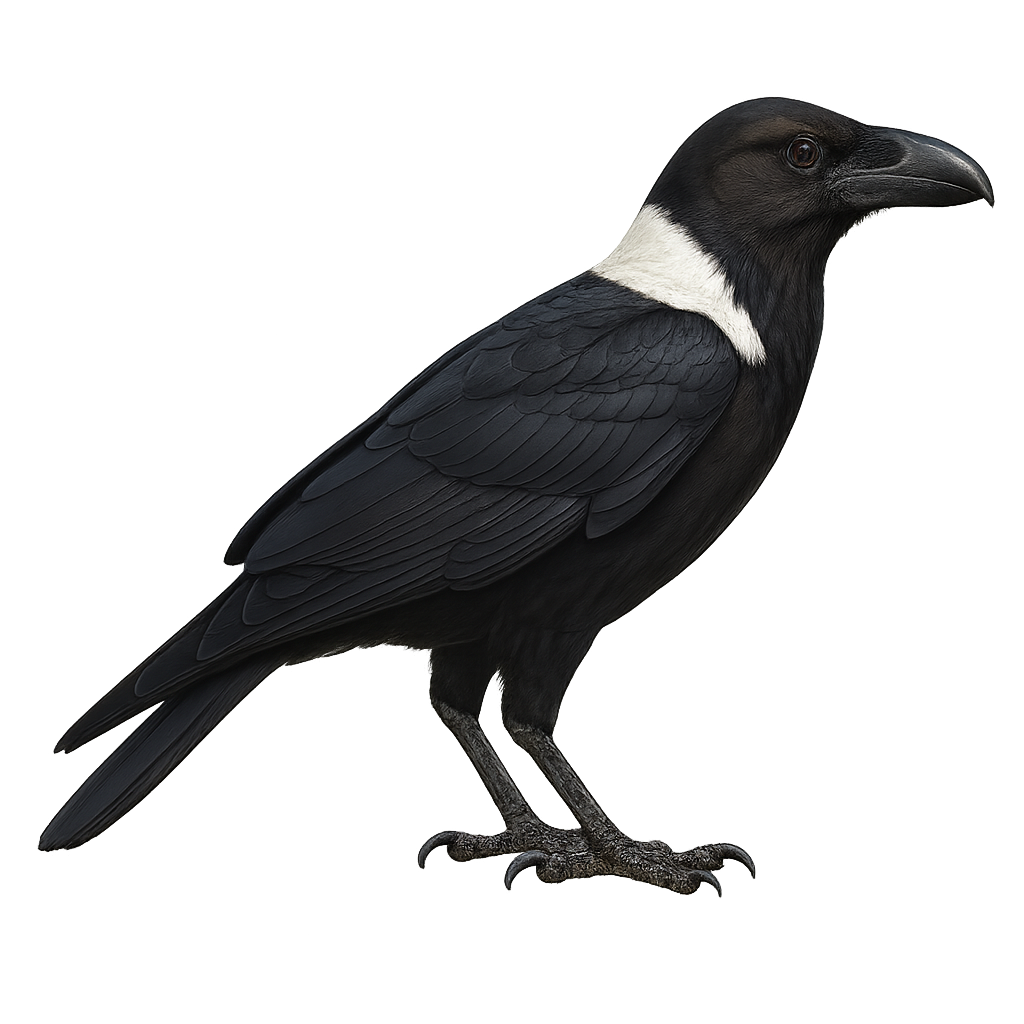Your wildlife photography guide.
Explore the white-necked raven in detail, study its behavior, prepare your shots.
Where to observe and photograph the white-necked raven in the wild
Learn where and when to spot the white-necked raven in the wild, how to identify the species based on distinctive features, and what natural environments it inhabits. The WildlifePhotographer app offers tailored photography tips that reflect the white-necked raven’s behavior, helping you capture better wildlife images. Explore the full species profile for key information including description, habitat, active periods, and approach techniques.
White-necked Raven
Scientific name: Corvus albicollis

IUCN Status: Least Concern
Family: CORVIDAE
Group: Birds
Sensitivity to human approach: Suspicious
Minimum approach distance: 10 m
Courtship display: May to June
Incubation: 18-20 jours
Hatchings: May to July
Habitat:
Mountainous regions, plateaus, rocky savannas
Activity period :
Primarily active during the day, with peak activity in the morning and late afternoon.
Identification and description:
The White-necked Raven is a large bird, easily identifiable by its glossy black plumage and distinctive white neck. It primarily inhabits mountainous regions and plateaus in southern Africa. Known for its remarkable intelligence, it uses tools to feed and is adept at solving complex problems. Its diet is varied, including insects, small animals, and carrion. Often found in groups, it is renowned for its varied vocalizations. Its presence is typically associated with open, rocky landscapes where it can easily find food and nesting sites.
Recommended lens:
400mm – adjust based on distance, desired framing (portrait or habitat), and approach conditions.
Photography tips:
To photograph the White-necked Raven, it is advisable to use a telephoto lens of at least 400mm to capture detailed images without disturbing the bird. Look for open and rocky areas where these ravens are often active. Be patient and discreet, as although they are suspicious, they can get used to your presence if you remain still. Take advantage of the early morning or late afternoon hours to benefit from soft and flattering light.
The WildlifePhotographer App is coming soon!
Be the first to explore the best nature spots, track rutting seasons, log your observations, and observe more wildlife.
Already 1 430 wildlife lovers subscribed worldwide

